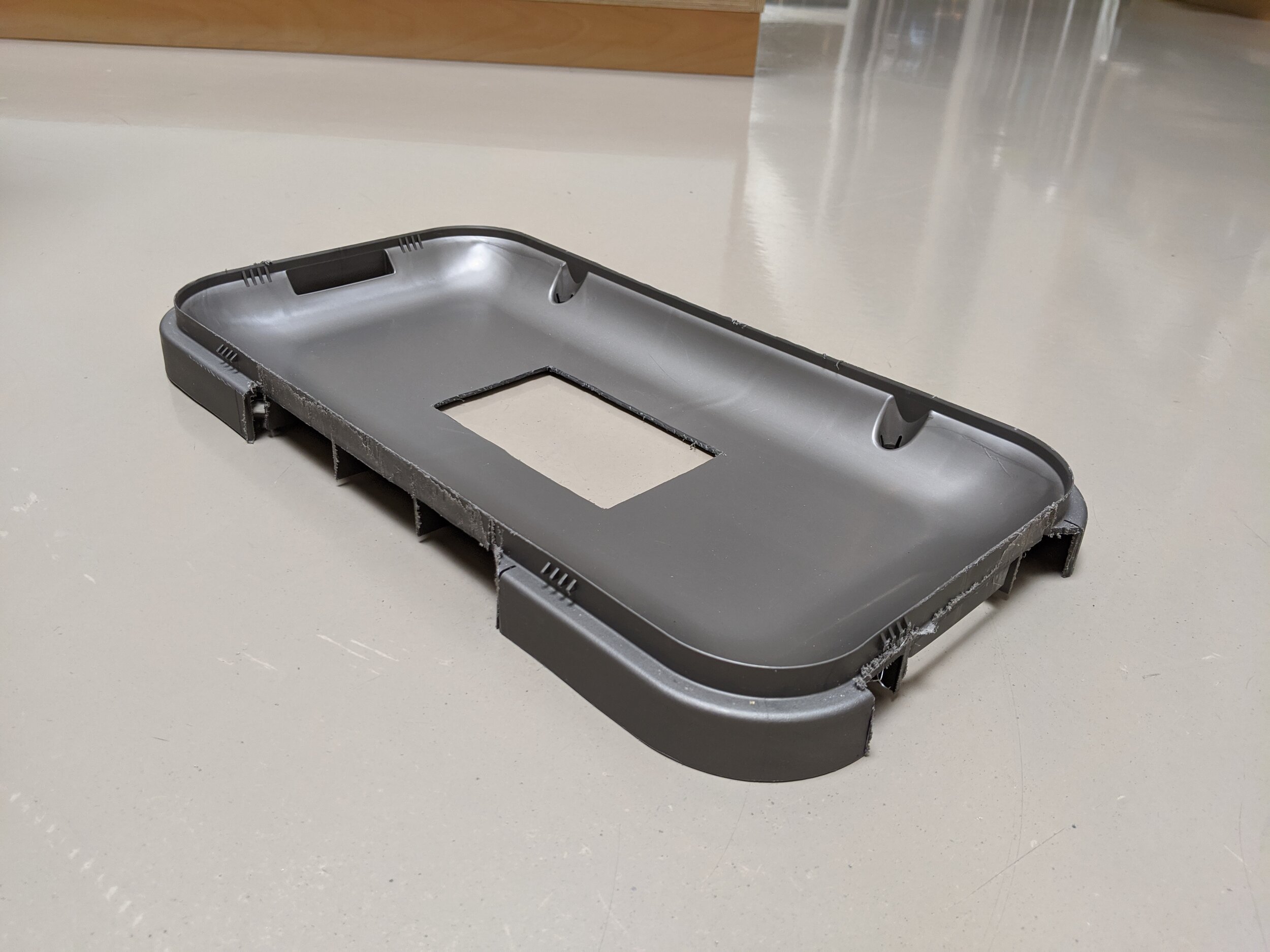simplehuman
R&D and Mechanical Engineering Intern: June 2020 - June 2021
simplehuman is a company that designs tools that help people become more efficient at home. Their products include trash cans, sensor pumps, and sensor mirrors. I was an intern on the R&D and Mechanical Engineering teams. I worked on various products, brainstorming and designing improvements, as well as creating prototypes to test new ideas and lifecycle upcoming products. Due to confidentiality agreements, I am limited in what I can show here, but below are some projects I worked on at simplehuman.
Trash Bag Vacuum Trapdoors
One of my first projects was working on a mechanism to reduce the force required to lift full trash bags out of trash cans. When lifting trash bags, a vacuum is created underneath, creating a vacuum force resisting the user’s lifting force.
One way to counteract this is to simply put a hole in the bottom of the trash can to allow air to flow beneath the bag, thus removing the vacuum. This raises multiple questions: doesn’t this risk trash leaking? What is the optimal size, height, and location of the hole. I first tested all three variables independently to determine optimum hole size, height and location. Then, I developed a passive trapdoor mechanism to enable airflow under the can while also keeping the bottom sealed during normal use. When a bag is lifted, the initial vacuum force lifts the doors open, allowing airflow and eliminating vacuum force. Ultimately, this design halved the force from extraneous factors (friction, vacuum, static). A 6 lb bag requiring ~12lbs to lift became only ~9lbs with this simple change.
CAD model of trapdoors
Hole location testing
Hole integrated with actual can bottom
3D printed trapdoor prototype
Hole size testing
Hole height testing
Sensor Mirror Motor Clutches
Another product I worked on was an upcoming motorized sensor mirror. The main design challenge was creating a clutch to protect the gearmotor system from breaking when experiencing large torques. The clutch had to be loose enough to slip, but stiff enough to eliminate backlash between the actual mirror and motor. After rigorous testing, we realized that the clutch was actually slipping around the motor shaft, causing most of our issues. We developed various iterations, and ended with up with an aluminum insert hub that fully eliminated backlash within the clutch.
Multiple hub prototypes fresh from Protolabs
Final design: a combination of aluminum and plastic to achieve durability while keeping cost low.
CAD models of hubs to be prototyped
Testing clutch hubs on actual motors
New Product Door Testing
For an upcoming product, the door mechanism was too complicated and large, whereas the product was required to be small. To solve this, I looked into replacing the entire mechanism with a passive foam door mechanism, similar to what’s used in CD drives. The main questions to be answered were what type of cutout was the best, and what material and thickness to use. I prototyped many different cutouts in many different materials, and after we decided on a couple good designs, I designed and built a custom mechanism to fatigue test each door for its full lifecycle. In the end, we had a small, simple solution to replace the original mechanism.
Some door prototype
Some more unique door designs
Door lifecycling mechanism. The linear actuator oscillates for 15,000 cycles, which is kept on track by a magnetic counter.
Original complicated mechanism isometric view
Door brainstorm sketches
Door testing for wrench cutout
Original complicated mechanism side view
Door testing for H cutout
Final cutout design: a simple H shape
Trash Bag Puncture Test Fixture
Another project I worked on was a puncture test fixture to accurately measure the force required to for a sharp object to puncture a simplehuman trash bag. While the previous method worked, it was difficult to setup and lacked accuracy. The setup itself deflected when a force gauge with a sharp tip was pressed upon the trash bag, meaning not all the force from the tip was exerted on the trash bag. Thus, the mechanism I was tasked to design and manufacture had to be completely rigid but also simple to setup and adjustable. From the start, I decided to use 8020 extrusion as the overall structure, as it was more than rigid enough for the relatively small forces exerted on the system, and it allowed for a large amount of adjustment and ease of assembly (no holes need to be drilled). After designing the fixture in Solidworks, I reviewed it with the rest of the engineers, and it was approved for manufacturing. The process to manufacture and assemble the fixture was straightforward, as I designed it to minimize the number of tubes that needed to be cut. The only other custom pieces were acrylic sheets that could be quickly cut on the lasercutter. After assembly, the fixture proved to get reliable results, had little to no deflection, and made it easy to swap out different trash bags to test, using a simple hinge design.
The assembled puncture fixture, with a trash bag that was done with testing.
Solidworks CAD model of the puncture test fixture, featuring a mock embroidering ring using real-life measurements, for securing the trash bag in place.




















